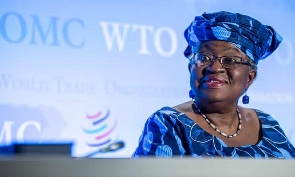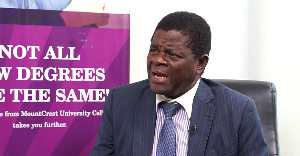The world economy is losing steam. With forecasts for both output and trade well below the long-term average, reviving growth has become a top priority for policymakers everywhere. One underappreciated tool at their disposal is trade finance.
It is no secret that countries that have achieved sustained high growth and major reductions in poverty in recent decades owe much of their success to international trade. Less noticed is the fact that, without trade finance – working capital for exporters and importers that enables them to mitigate the payment risks inherent in international transactions – cross-border trade would be reduced to a trickle.
One reason why trade finance gets overlooked is that, in advanced economies, it is both available and affordable. But this is not the case for low-income countries, where foreign banks have limited appetite to operate in the best of times. Amid tightening regulatory requirements – relating to capital adequacy, money laundering, and sanctions enforcement – these markets’ appeal is diminished further.
The upshot is that access to trade finance is highly uneven across countries and businesses. New research, carried out jointly by the International Finance Corporation and the World Trade Organization, shows that, at most, 25% of trade in West Africa and the Mekong region is supported by trade finance, compared to 60-80% in advanced economies.
When firms in West Africa do manage to access trade finance, the rates they receive are well above the local policy rate, even though financing trade is generally viewed as low-risk, since the goods being shipped serve as collateral. The premium over local benchmark rates amounts to 4-10 percentage points for large corporations, and 7-17 percentage points for small businesses, compared to around one percentage point or less for advanced-economy firms.
In emerging-market and developing economies, the gap between demand for trade finance and supply is in the neighborhood of $2.5 trillion, according to estimates by the Asian Development Bank. The gap is largest for micro, small, and medium-size enterprises (MSMEs) and businesses led by women, who are more likely than men to be turned down for trade finance. Otherwise viable transactions often must be abandoned.
Closing the trade-finance gap would not only yield major dividends for global trade, but also help countries to create jobs, reduce poverty, and ensure access to critical goods like food and medicine. WTO economists estimate that an increase in trade-finance coverage from 25% to 40% – an entirely realistic scenario – would increase annual trade flows by 8%, on average. As MSMEs and others gained access to global production and trade networks, boosting growth and employment, world trade would become more diverse, dynamic, and socially inclusive.
To get more trade finance to those who need it, three key changes are needed. The first is to develop and promote a more granular understanding of trade-finance ecosystems in emerging-market and developing economies.
The recent IFC-WTO research shows that, of all the firms that could participate in trade, only a fraction attempt to secure trade finance from banks. The rest are discouraged by the prospect of high costs and collateral requirements, as well as by previous rejections. A 2022 IFC-WTO study found that, in West Africa, only well-established exporters and importers could access trade finance.
The IFC and the WTO are tackling these problems by training banks and MSMEs in developing economies to disseminate knowledge about available trade-finance solutions, and by addressing issues like excessive collateral requirements and negative credit-risk perceptions, so that more applications ultimately get approved. Our latest joint report offers insights into this effort from Cambodia, the Lao People’s Democratic Republic, and Vietnam.
The second change that is needed is an increase in support for trade in low-income countries through financing and guarantees. During the COVID-19 pandemic, IFC trade-finance programs enabled local banks to support the import and export of food, medicines, and other critical goods in countries from which international banks had withdrawn. In the last fiscal year, the IFC supported $16 billion in essential trade flows, bridging the divide between the perceived and actual risk of providing trade finance in emerging-market and developing economies.
Beyond the financing itself, time-bound support from organizations like the IFC can provide much-needed know-how to developing-economy banks, giving them the confidence to provide trade finance to underserved businesses in their domestic markets. Greater cooperation on trade finance would bolster ongoing efforts by multilateral development banks and development finance institutions.
The third change must be to integrate local producers into global supply chains. Supply-chain trade represents half of all global trade, and two-thirds of international trade for Cambodia and Vietnam. But it accounts for only 2% of available trade finance supplied locally in Vietnam, and almost no supply-chain finance is locally available in Cambodia. This means that lower-tier local producers in these underserved markets are under significant financial pressure when they trade.
Already, the IFC is doing its part to address this problem: in 2022, it established a program dedicated to increasing supply-chain finance to emerging-market suppliers. Other development finance institutions and private-sector financial institutions can and should follow suit.
Trade and supply-chain finance has quietly propelled enormous gains in living standards in recent decades. With just a few key changes, it can help more economies take off, providing a boost to people’s livelihoods – and to the global economy.
Business News of Tuesday, 19 December 2023
Source: Ngozi Okonjo-Iweala

















